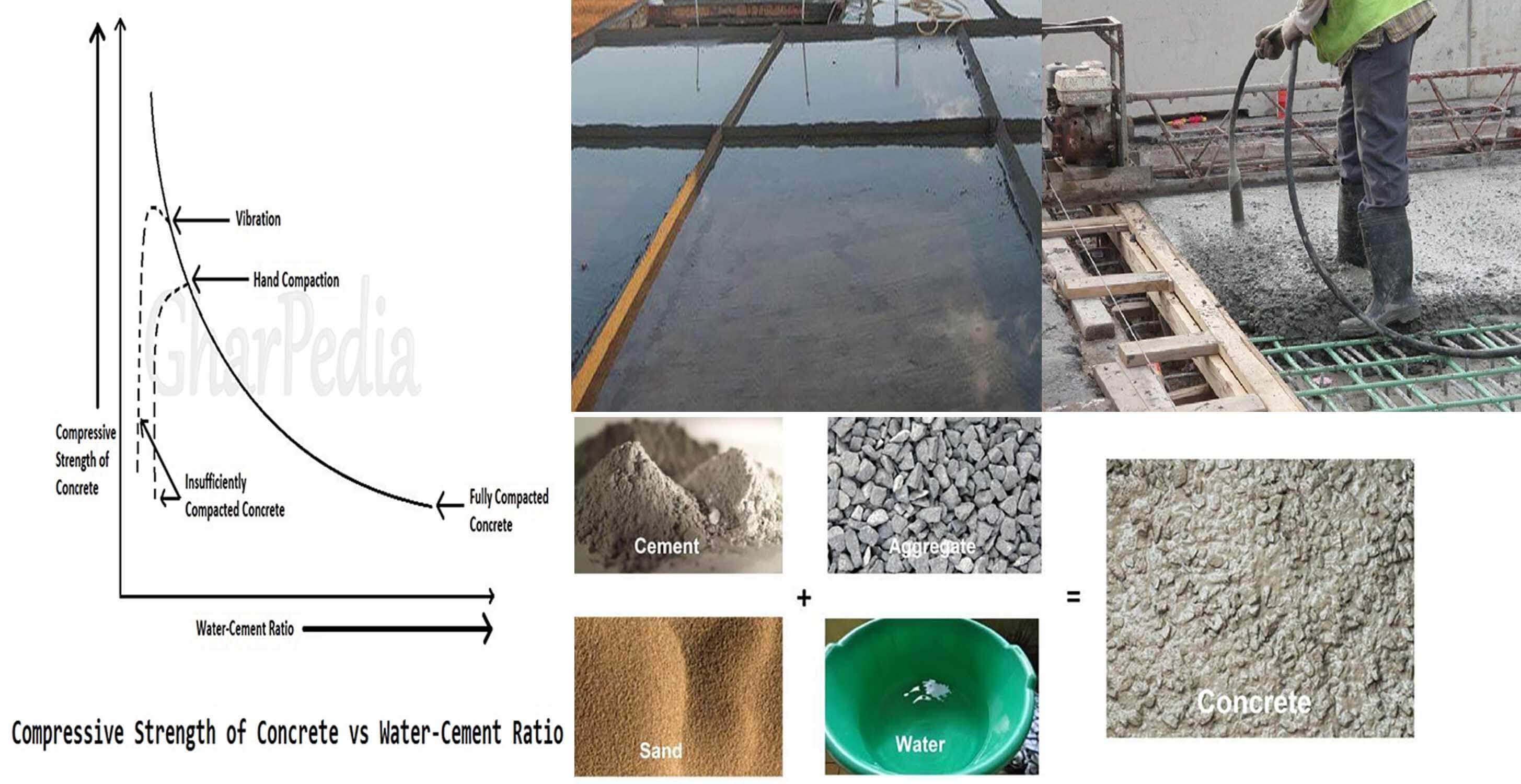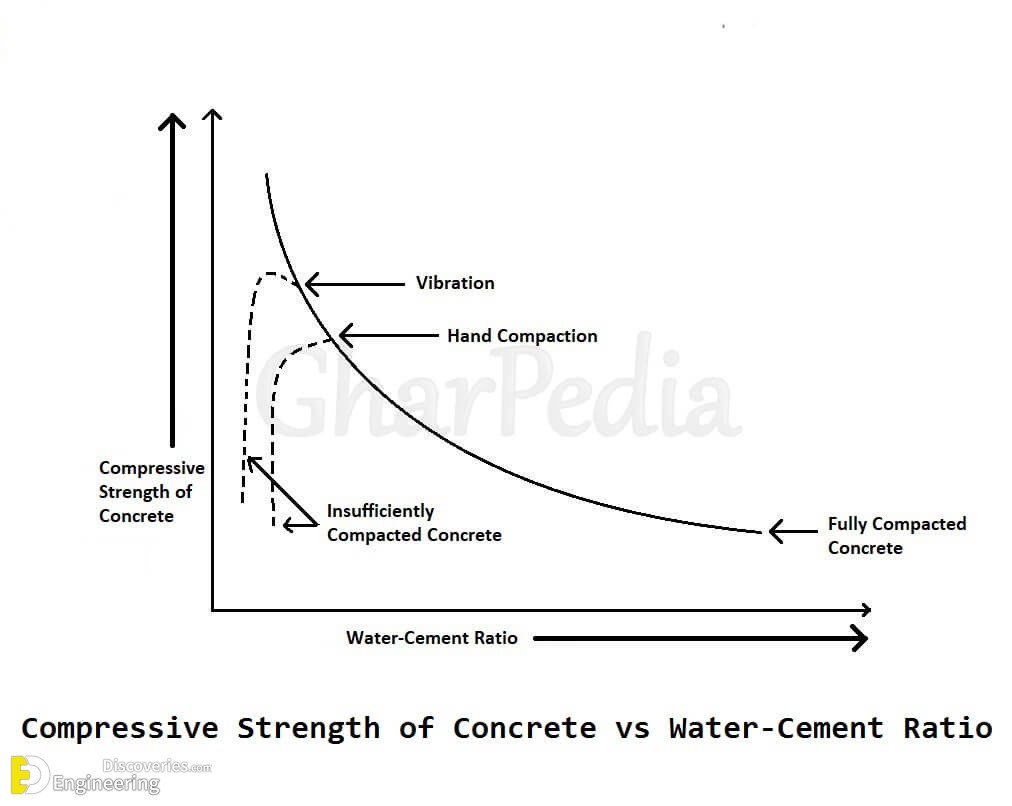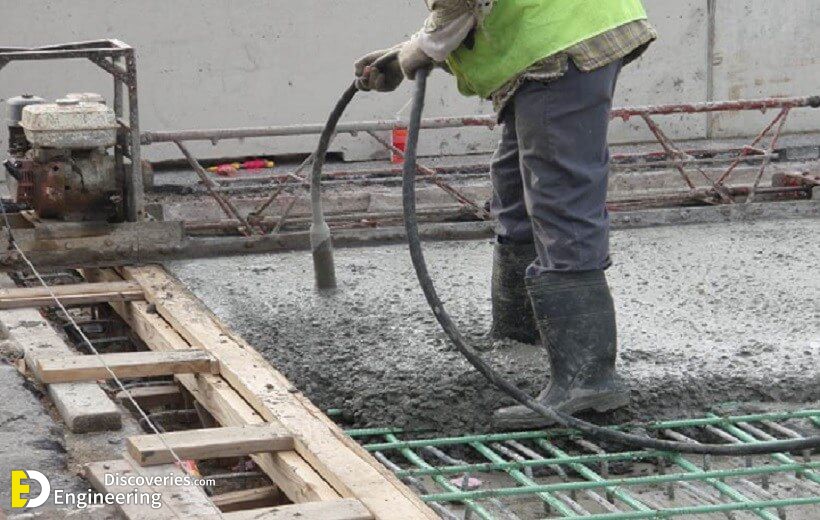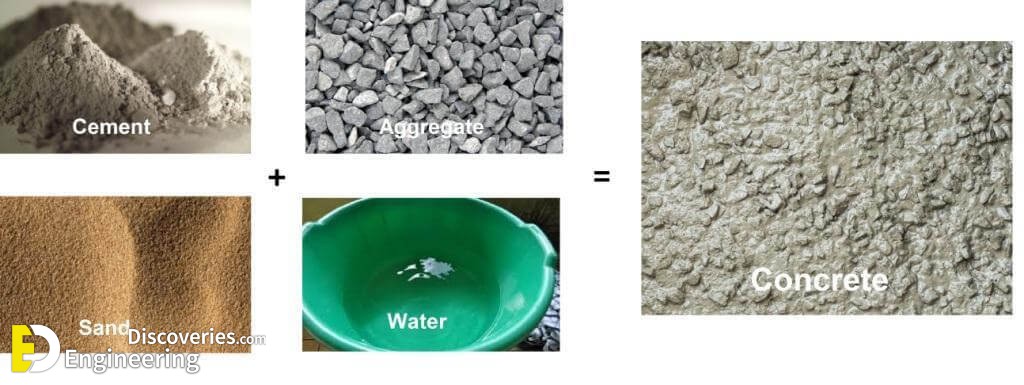1- Water – Cement Ratio (W/C Ratio)
The ratio of the weight of water to the weight of cement is called Water/Cement ratio. It is the most important factor for gaining the strength of concrete. The lower w/c ratio leads the higher strength of concrete. Generally, the water/cement ratio of 0.45 to 0.60 is used. Too much water leads to segregation and voids in concrete. Water/Cement ratio is inversely proportional to the strength of concrete. As shown in the chart below when the w/c ratio is increased the strength of concrete gets decreased and when w/c ratio is decreased then the strength of concrete increases.
2- Compaction of Concrete
Compaction of concrete increases the density of the concrete because it is the process in which air voids are removed from freshly placed concrete which makes the concrete compact and dense. The presence of air voids in concrete greatly reduces its strength .Approximately 5 % of air voids can reduce the strength by 30 to 40 %. As we can see in the above chart, even at the same water/cement ratio strength is different with different compaction accuracies. In the fully compacted concrete, strength is higher than the insufficiently compacted concrete.
5- Grading of Aggregate
Grading of aggregates determines the particle size distribution of aggregates. It’s the most important factor for concrete mix. There are three types of graded aggregate Gap Graded Aggregate, Poorly graded aggregate and Well-graded aggregate. Well-graded aggregate contains all size of particles of aggregate. So that, they have a less amount of voids. The use of well-graded aggregates gives higher strength to the concrete.
6- Curing of Concrete
Hence please remember, use as less water as possible during concrete mixing and use as more as possible after concreting.
7- The Rate of Loading
The strength of concrete increase with the increase in the rate of loading because at the high rates of loading, there is less time for creep. Creep produces permanent deformation in the structure at constant loading. So that, the failure occurs at limiting values of strain rather than the stress. In rapid loading, the load resistance is better than the slow loading.
8- Effect of Size of Maximum Size of Aggregates on the strength
The strength development of concrete depends on both time and the temperature. The strength of the concrete is a function of the summation of the product of time and temperature. This summation is called as the maturity of concrete. Maturity = Σ ( Time x Temperature ). The maturity is measured in degree centigrade hours or degree centigrade days. The maturity of the concrete is helpful in estimating the strength of the concrete at any other maturity as a percentage of the strength of concrete at full maturity.
10- Weather Condition
Weather condition also affects the strength of concrete due to different reasons. In cold climate, exterior concrete is subjected to repeated freezing and thawing action due to the sudden change in weather. It produces deterioration in concrete. With the change in moisture content, materials expand and contract. It produced cracks in concrete.
11- Temperature
With the certain degree of temperature increase, the rate of hydration process increases in it which, it gains strength rapidly. Sudden temperature changes create a thermal gradient, which causes cracking and spalling of concrete. So that, the final strength of concrete is lower at the very high temperature.
12- Age of Concrete
With increase in age of concrete, the degree of hydration would be more. Hydration process is the chemical reaction of water and cement. Hydration produces the gel which plays a significant role in the bonding of particles of the concrete ingredients. Therefore, the strength of concrete increases with its age. Normally, concrete strength gets doubled after 11 years provided there are no adverse factors.
The strength at 28 days = f28 ; The strength at 7 days =f7 ;k2 = Constant Value vary from 3 to 6; k1= Constant value varies from 0.3 to 0.8 The rate of gain of strength will depend on the age. In the actual case, the strength of the concrete will develop beyond 28 days. The increase in the strength beyond 28days is taken in into consideration in the design of structures. The strength of the concrete at a lower age and 28 days depends upon the cement composition, fineness of the cement and the curing temperature. Concrete with lower water cement ratio gains strength, more rapidly than the mix with high w/c. The relationship between 7 days strength and the 28 days strength is: 𝛔 (28) = 1.4𝛔 (7) + 150 Here, The strength at 28 days = 𝛔 (28); The strength at 7 days =𝛔 (7), Another Formula is, f28 = k2 (f7)k1





